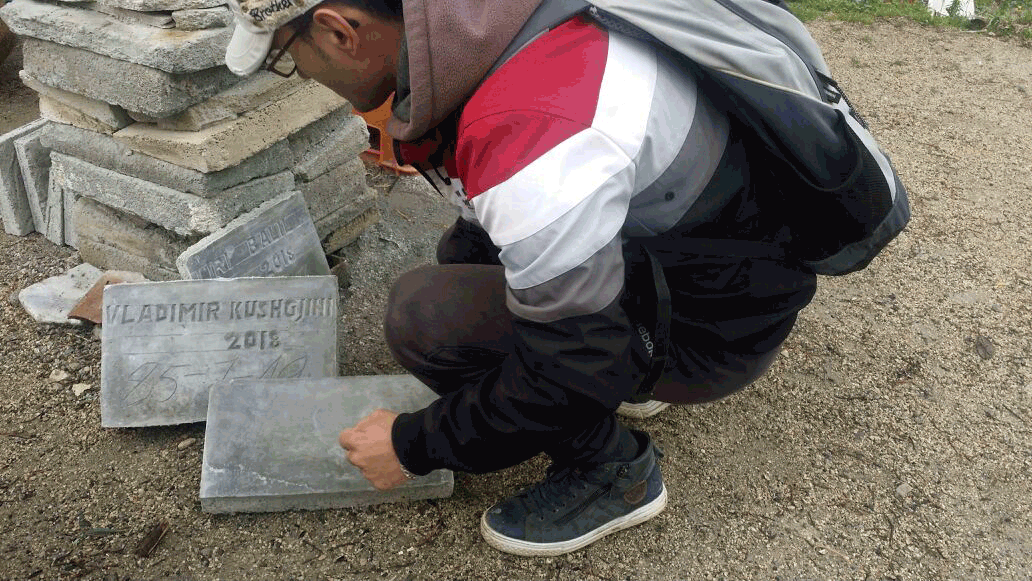Arjan Serjanaj, Fridom, 2018
On 20 February 2018, Arjan Serjanaj placed a gravestone bearing an inscription of the phonetic spelling of the English word freedom, i.e., “fridom”, on the exact spot where the statue of Enver Hoxha used to be located before it was brought down by protesting crowds on 20 February 1991.
Serjanaj's handling of the gravestone in this work, however, is rather reminiscent of a lapidar. The lapidar forms an important category of Albanian communist monumentality that is hard to both translate and define. There is an inherent affinity between a lapidar and a gravestone, and, indeed, between a lapidar and a certain idea of freedom. The majority of lapidars erected in Albania between 1945-1990, of which there are hundreds, commemorate fallen partisans, as well as specific battles and/or military units dating back to the National Anti-Fascist Liberation War.
That said, there are a number of ways in which a lapidar and a gravestone differ from one another. First of all, whereas lapidars were (and still are) scattered throughout the country, in both distant rural areas as well as densely populated urban ones, one commonly finds gravestones inside graveyards or cemeteries, places that are clearly delineated and marked off from the spaces of everyday life. Secondly, as a rule of thumb, a lapidar bears a strong relation to a specific place – the place in which it is erected – and concrete event from the past – the event it commemorates – that a gravestone simply does not. As such, the main function of a lapidar is to reaffirm and ensure the actuality of the past, i.e., the dead, in the present, i.e., the living. The main function of a gravestone, on the other hand, is to reaffirm and ensure the separation of the dead, i.e., the past, from the living, i.e., the present.
We could say then that freedom, or a certain idea of freedom, is the product of this dialectic between a lapidar and a gravestone and all that it implies. Arjan Serjanaj’s intervention in the new Skanderbeg Square obviously alludes to this “old” idea of freedom, whereby there is a direct link between the fight against fascism and the creation of a communist utopia. It also alludes to the “new” idea of freedom, whereby the liberation from communism, dictatorship, totalitarianism, etc., if it was ever linked to the creation of a utopia, even a capitalist one, no longer is. The new Skanderbeg Square has often been described as and praised for being “post-historical”, mostly by individuals with little knowledge of Albanian culture, history, politics, or society. Through this latest work of his, FRIDOM, Serjanaj posits that insofar as the new Skanderbeg Square may be described as post-historical, it is precisely in terms of the erasure from public discourse and public space of the idea of freedom as the horizon for politics.
